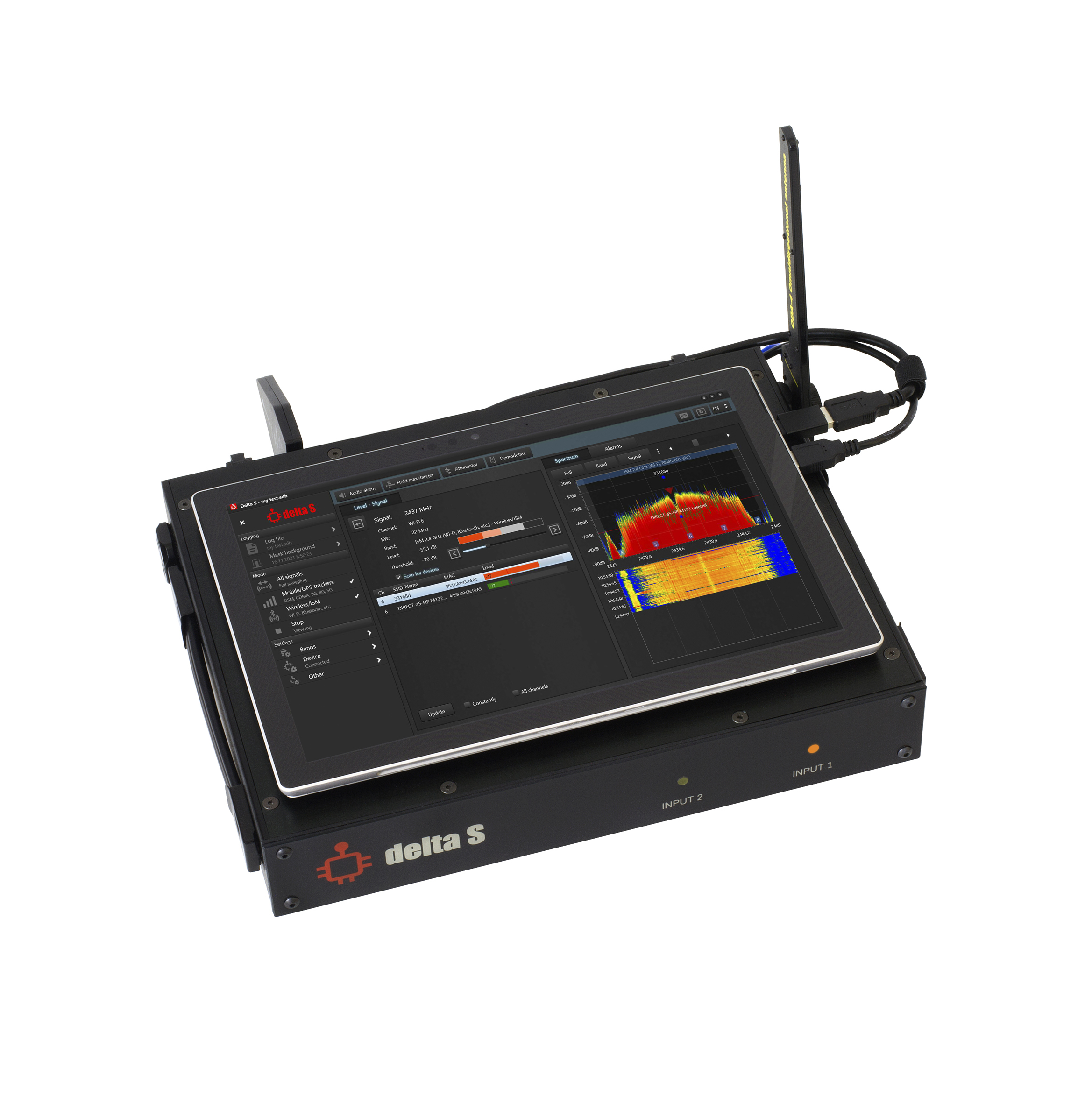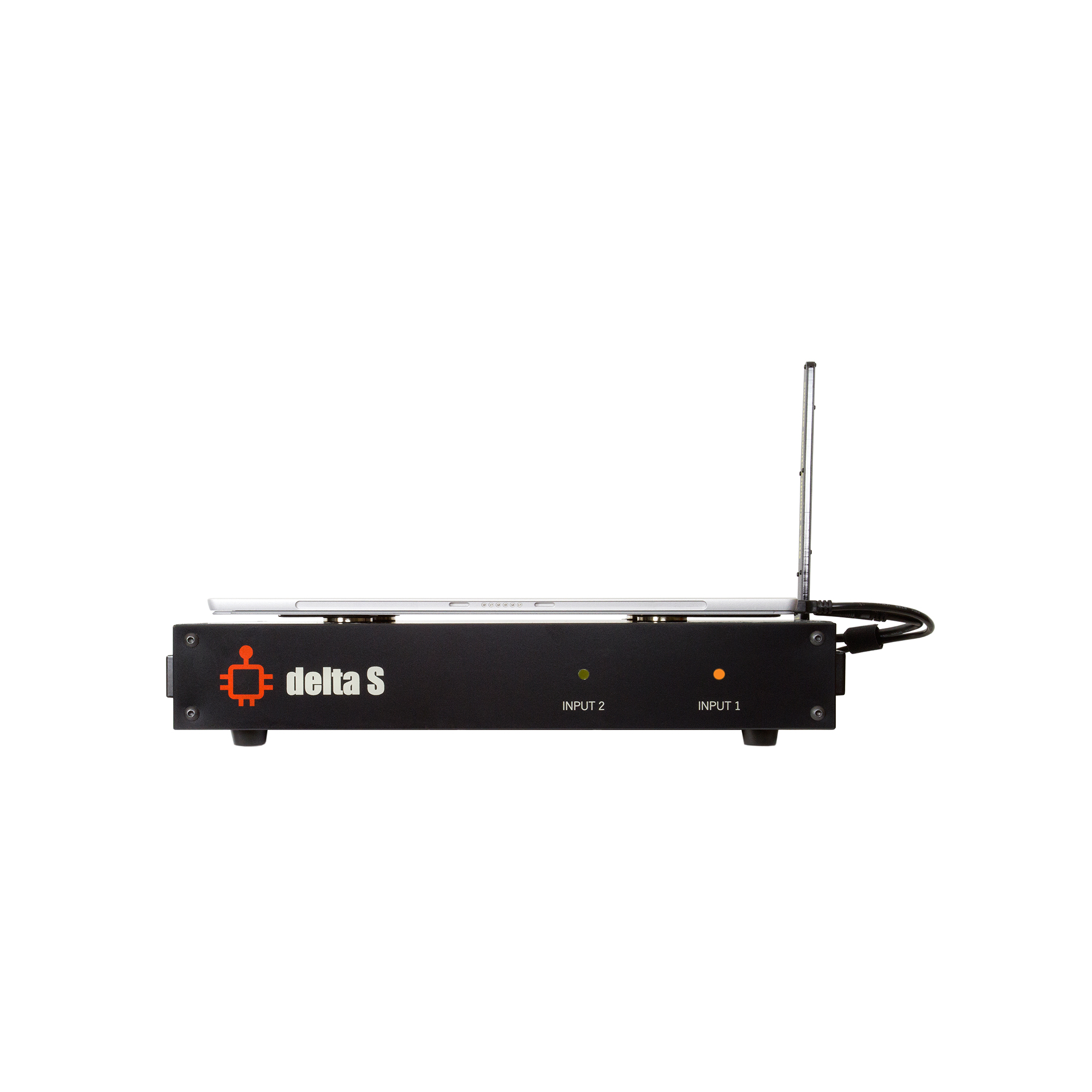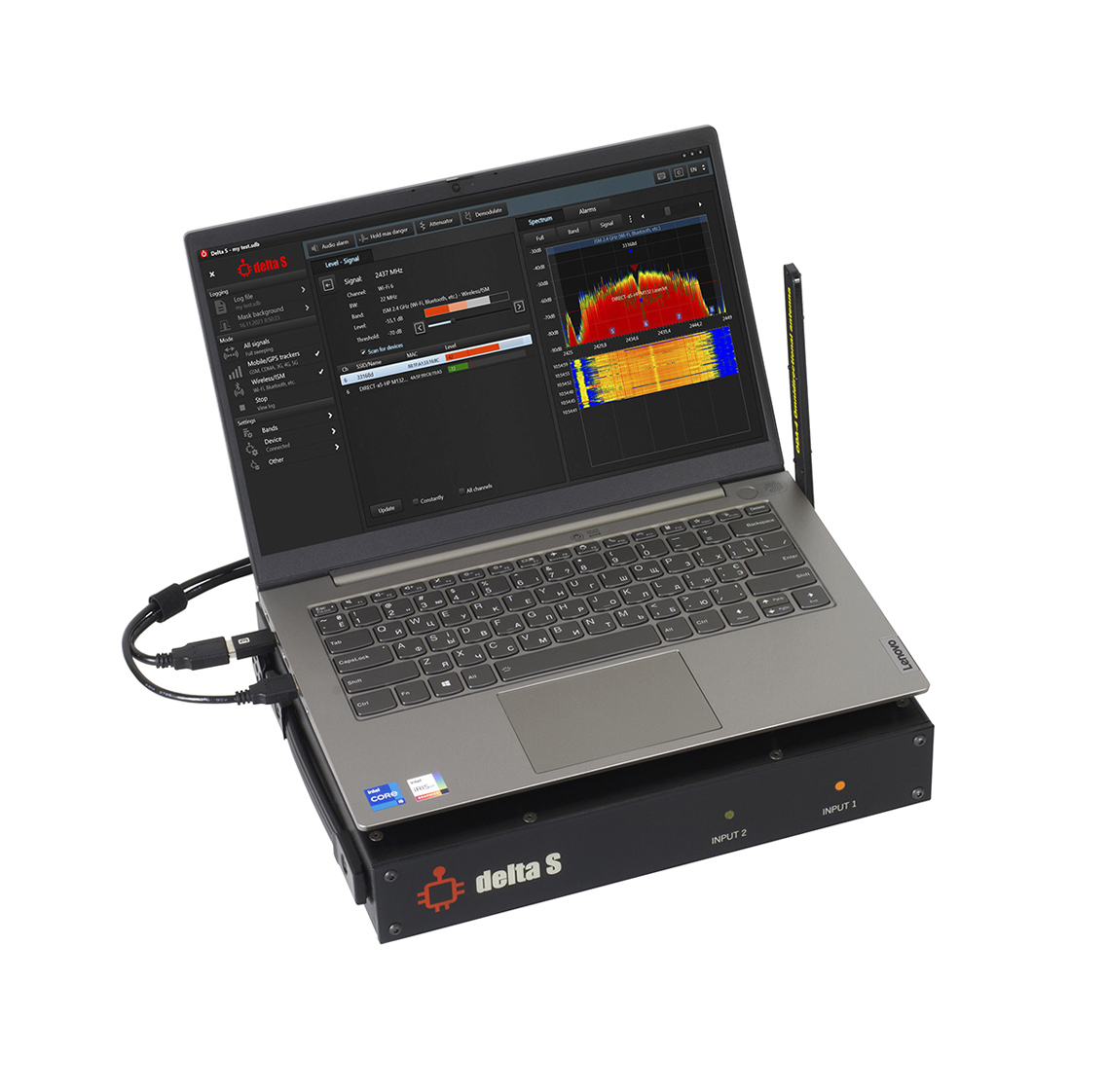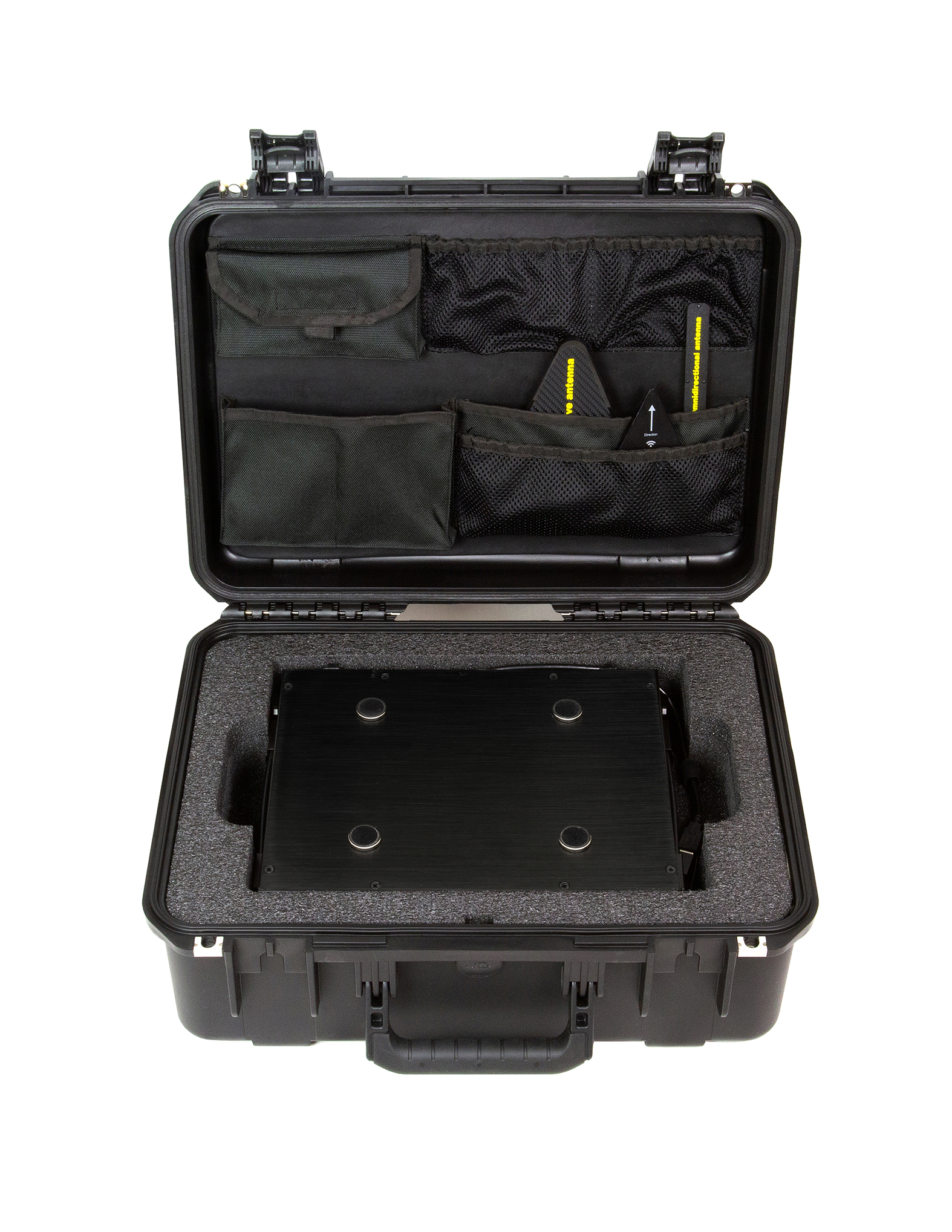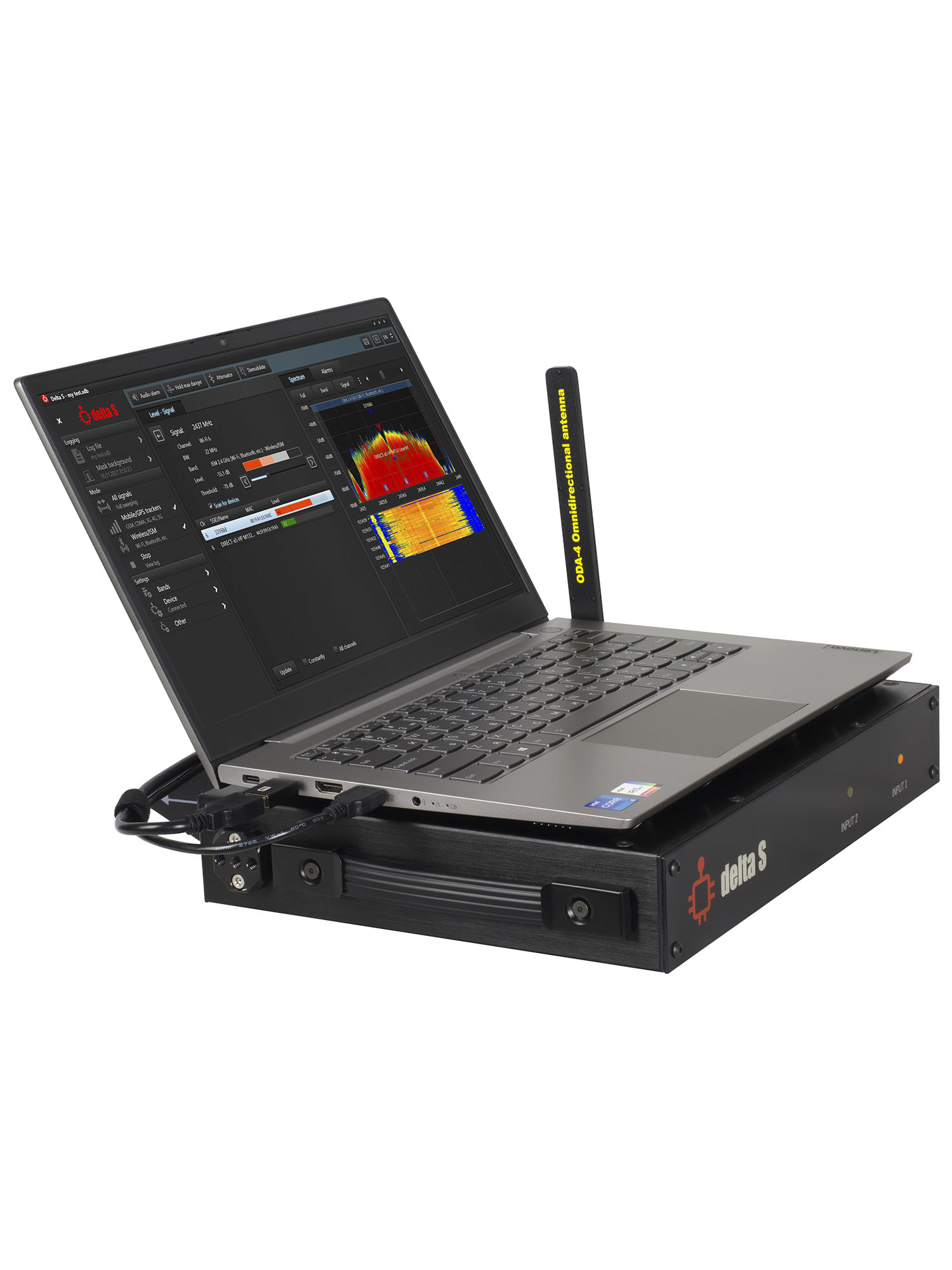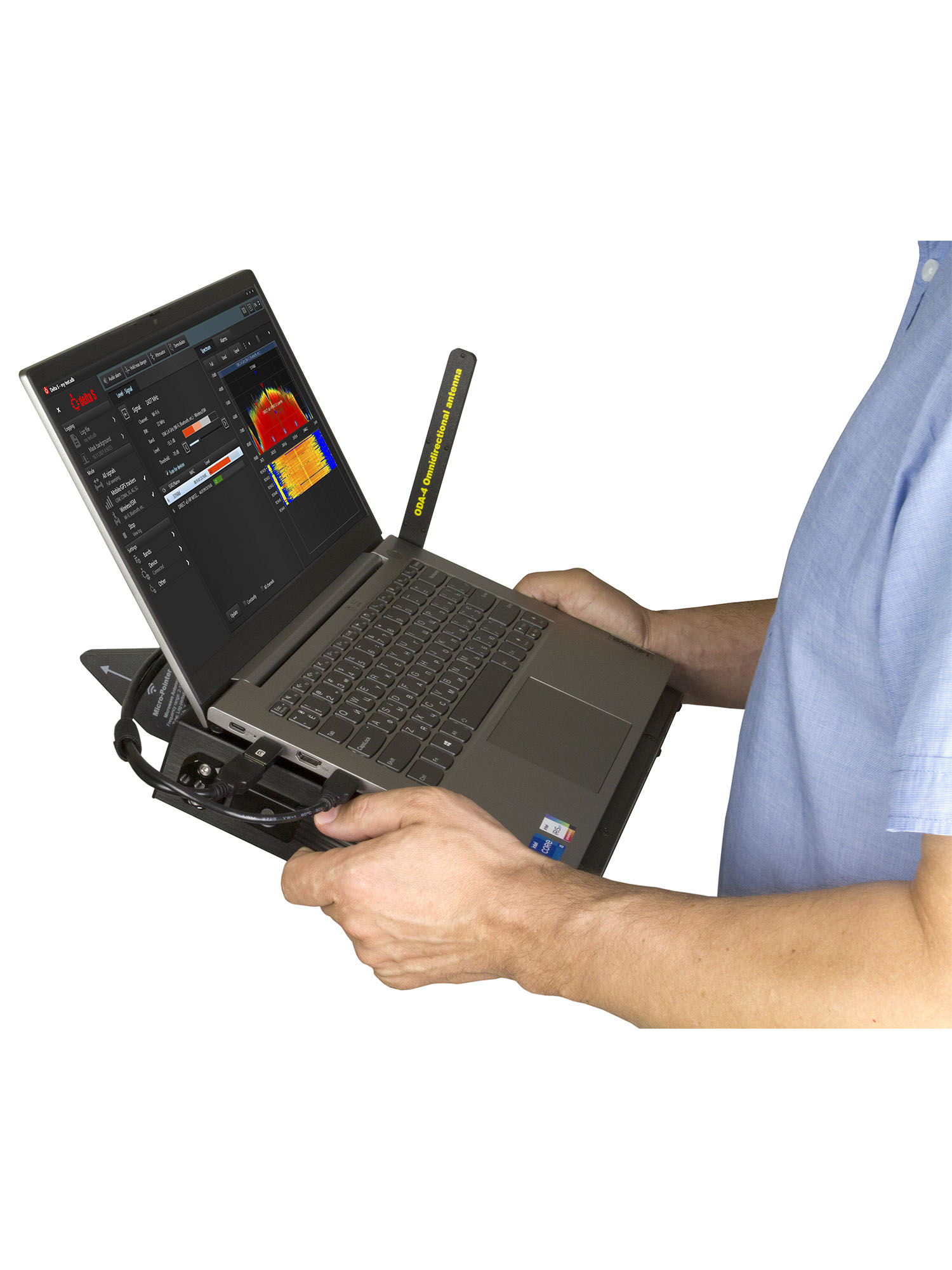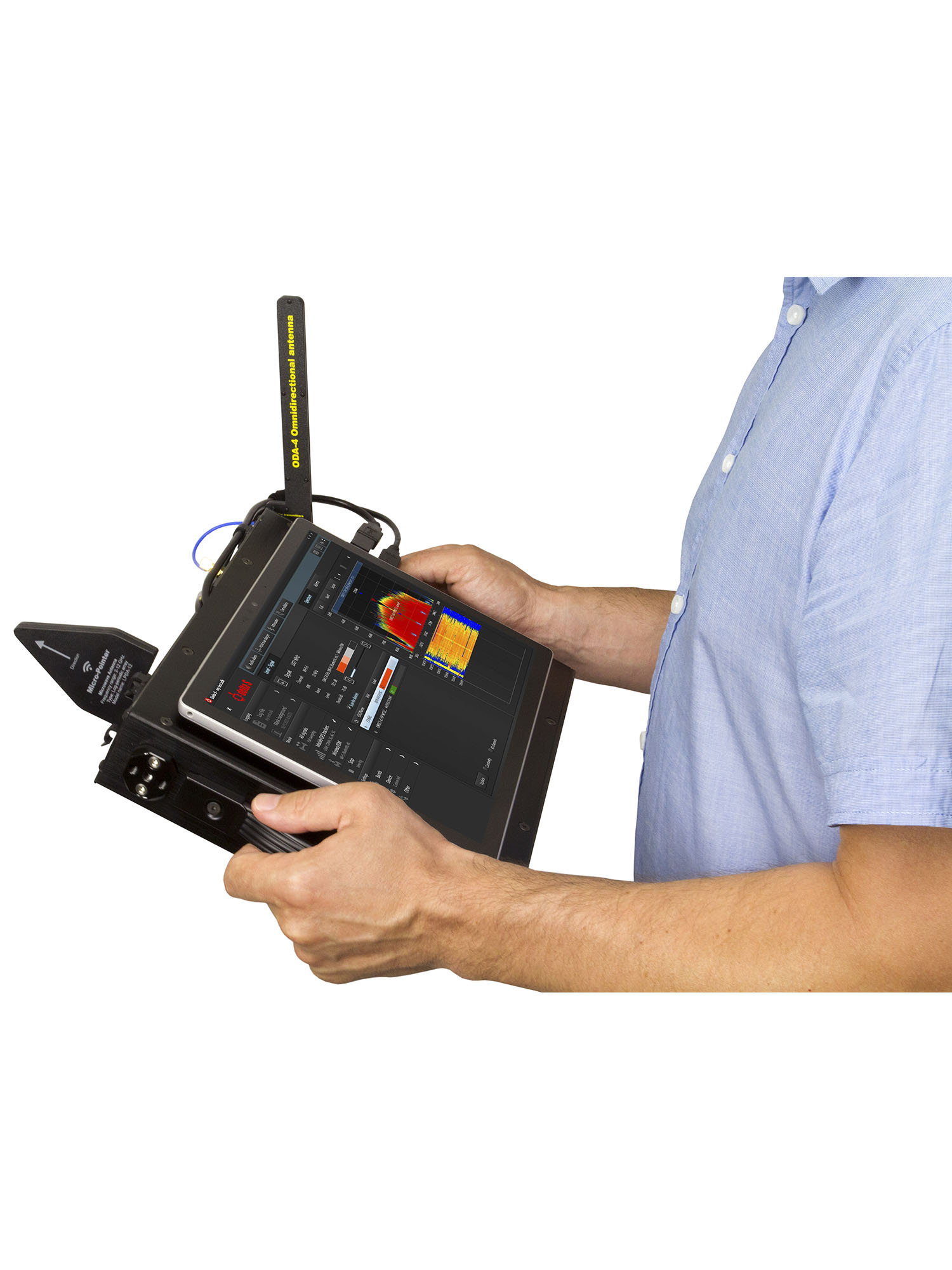Features
- Both easy to learn and a powerful sweeping system
- Quickly and reliably detects all types of RF surveillance devices in the range up to 6 GHz, including analog, digital, working continuously and periodically, transmitting audio or video, with or without encryption
- Finds and identifies covert surveillance devices which use the digital standards GSM, 3G, 4G / LTE, 5G, Bluetooth, Wi-Fi, DECT and others in the range up to 6 GHz
- Analyzes Wi-Fi 2.4 GHz, Wi-Fi 5 GHz, Bluetooth, “Bluetooth LE” and “Bluetooth LE Advertising” channels
- Detects RF signal jammers on all bands, including mobile uplinks and downlinks, bands of Global Navigation Satellite System (GPS, GLONASS, GALILEO, etc.), Wi-Fi/Bluetooth, etc.
- Spectral analysis provides high sensitivity and a long detection distance, exceeding the performance of typical RF detectors and near-field receivers by 10-20 times
- The background masking feature allows you to reject friendly signals such as television, radio, mobile base stations, etc., and focus on finding local signals that pose a danger
- Can be quickly adjusted to the local frequency allocation in the country of use (mobile and wireless bands)
- High-speed spectrum updating and wide real-time bandwidth (RTBW) provide the ability to register short-burst signals
- Search modes include: “All Signals”, “Mobile/GPS trackers”, “Wireless/ISM”, “Downlinks/Navigation” and “Custom”, as well as two additional modes for the inspection of suspicious bands or signals
- Two antenna inputs and built-in antenna switch provide maximum sensitivity over the entire frequency range
- Unlimited number of logs, each can contain an unlimited history of events
- “ThreatMark” feature shows dangerous signals on a spectrum graph
- The audio alarm warns the user about the presence of danger with a sound of variable intensity
- Works with, and is powered by, a laptop or tablet
- Has convenient magnetic system for attaching the laptop / tablet to the main unit
- Other features: attenuator, hold max. danger, demodulation
FUNCTIONS AND FEATURES
- SEARCH MODES
- In the “All signals” mode the system analyzes the spectrum in the full frequency range and detects signals of all types. In addition to mobile and wireless signals, bugging surveillance devices are successfully detected on other frequencies, such as VHF / UHF radio microphones, 900/1200 MHz wireless cameras, and all other RF transmitters up to 6 GHz.
- In the “Mobile/GPS trackers” mode the system detects mobile devices of all standards, including GPS beacons (trackers) that are installed on vehicles and transmit coordinates via mobile networks. Quickly and reliably detects embedded devices (hidden cameras and microphones) that transmit information via mobile GSM, 3G, 4G / LTE and 5G networks (up to 6 GHz).
- In the “Wireless/ISM” mode the Delta S quickly detects Wi-Fi, Bluetooth, ZigBee, DECT, LoRa and other radio frequency devices operating on the ISM bands, such as remote controls, smart home components, wireless sensors, etc
- In the “Downlinks/Navigation” mode the system scans the downlink bands of mobile networks and bands of Global Navigation Satellite System. With the active “Detect RF jamming” feature the interferences and anomalies created by RF signal jammers will be detected and
displayed on the bargraph. Additionally, a special warning sound will be produced.
- BANDS
- Information about the RF environment is displayed on the bargraphs, each responsible for a separate frequency band
- The table of bands can be easily adjusted to the frequency allocation of the country of use
- It is possible to edit and add new bands
- Each band has an individual threshold
- For each band the following information is displayed: name, frequency, current dB level, peak dB level, maximum dB level, threshold, number of dangerous signals and frequency of the most dangerous signal
- The band’s bargraph changes color to red when the threshold is exceeded
- The alarm history for each of the bands is stored in the log and displayed on the graph
- The user can inspect separate bands
- SIGNALS
- Signals are automatically recognized in spectral traces, added to the signal list, and then automatically updated
- The alarm history for each signal is stored in the log and can be displayed on the alarms graph
- The user can proceed to the inspection of a single signal
- MASKING OF BACKGROUND
- The “Mask Background” procedure allows the operator to collect and mask external signals, such as TV signals, radio signals, mobile base stations, etc. and thus, focus on identifying only those transmitters that are located in the target area
- The duration of measurement can be selected
- Background masking can be performed at several points around the target zone
- Offset of spectral mask (sensitivity) is set by a threshold
- ANALYSIS OF Wi-Fi AND BLUETOOTH
- Level of each active Wi-Fi channel is displayed separately when the bands 2.4 GHz and 5 GHz are inspected. Each channel can be studied individually
- Levels of Bluetooth, Bluetooth LE and Bluetooth LE Advertising are displayed separately. Each type can be inspected separately.
- A list of Wi-Fi access points with their attributes and levels can be displayed in the Devices list and on the spectrum
- THRESHOLD AND WARNING ABOUT ALARM
- Each band has an individual threshold which can be defined by user
- The color of the bargraph changes to red when the threshold level is exceeded
- The “Audio alarm” feature warns the operator when the threshold is exceeded. The intensity of the alarm increases as the level rises
- SPECTRUM
- Traces “Live” and “Peak”
- Persistence mode
- Dangerous signals are marked on the spectrum (ThreatMarks feature)
- Waterfall function
- Convenient scrolling and zooming
- Compatibility with touch screens
- Able to zoom in on any part of the spectrum while continuing to search in the entire range
- DETECTING OF RF SIGNAL JAMMERS
- The system can scan bands where the RF signal jammers operate – mobile downlinks and bands of Global Navigation Satellite System (GNSS)
- The “Detect RF jamming” feature activates measurement of noise level
- Special audio alarm warns about jamming
- “Noise level” bargraph displays the level of interference and helps to find the source
